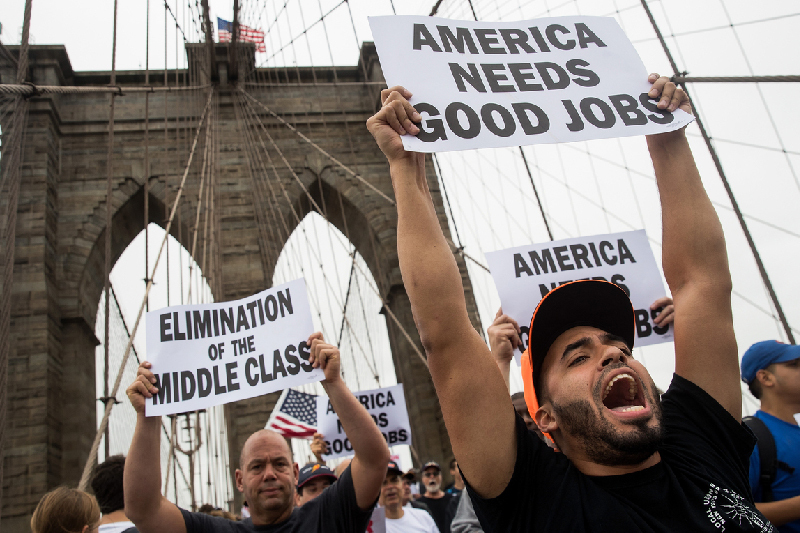

Last year was a significant year for the American labour movement, marked by high-profile strikes and growing public support for unions
Last year was a significant year for the American labour movement, marked by high-profile strikes and growing public support for unions. Despite this, union membership remains low, especially in the private sector. The paradox of the American labour movement lies in the contrast between the perceived strength of established unions and the challenges faced by new organizing efforts.
Despite a historically hot labour market and increased public support, only 10 percent of American workers belong to unions, with just 6 percent in the private sector. Workers at major companies like Amazon, Starbucks, and Trader Joe’s struggle to secure contracts or meaningful negotiations. This disparity highlights the disconnect between the advantages of union membership and the limited opportunities for many workers to experience these benefits.
The decline in union membership is not a recent phenomenon but a result of long-standing legal and policy shifts aimed at making it difficult to form new unions. While established unions from the 1930s thrive, new organizing efforts face significant hurdles. This trend is evident in the fact that, despite a steady number of unionized workers, the overall percentage of the workforce in unions has declined over the years.
The Wagner Act of 1935 marked a turning point for the American labor movement, granting workers the right to form unions and engage in collective action. This led to a significant increase in union membership, reaching 34 percent of the workforce by 1945. However, the subsequent Taft-Hartley Act of 1947 weakened key provisions of the Wagner Act, setting the stage for the challenges faced by new organizing efforts today.
The legal and policy shifts that followed the Wagner Act have made it increasingly difficult for new unions to form. This has led to a situation where, despite public support and favourable conditions for organized labour, many workers are unable to unionize their workplaces. The current moment, while hopeful, requires a reversal of these changes to truly revitalize the American labor movement.
The American labor movement faces a paradox, with established unions thriving while new organizing efforts struggle to get off the ground. The decline in union membership is not due to a lack of interest or support but rather to long-standing legal and policy barriers. To truly strengthen the American labor movement, these barriers must be addressed to create a more favourable environment for workers seeking to unionize.
In a move intended to strengthen diplomatic relations and convenience of travel, the Maldives and Commonwealth of Dominica have now…
Microsoft's expectations are going up as training on AI is now a requirement for all employees. An internal memo states…
According to internal documents leaked to Politico, the Trump administration is planning to terminate over 2,145 senior level NASA employees.…
Starting in 2026, the United States will charge a required Visa Integrity Fee of $250 for non-immigrant visa applicants for…
In a major step towards worker nationalisation, Qatar's new Law No. 12 of 2024, which is effective from April 2025,…
In a noteworthy digital reform, e-Service Books will be mandated for all ministries and departments of the central government beginning…
This website uses cookies.
Read More